Pre-Budget Recommendation From Healthcare Industry 2024
PRE Budget Expectations FROM healthcare sector experts - 2024-25 Afzal Kamal, Editor-in-chief, Medgate Today To achieve twin objectives of Equitable and Secured Healthcare, and Holistic Vasudhaiv Swastha Kutambakam I hereby propose following suggestions A co-ordination
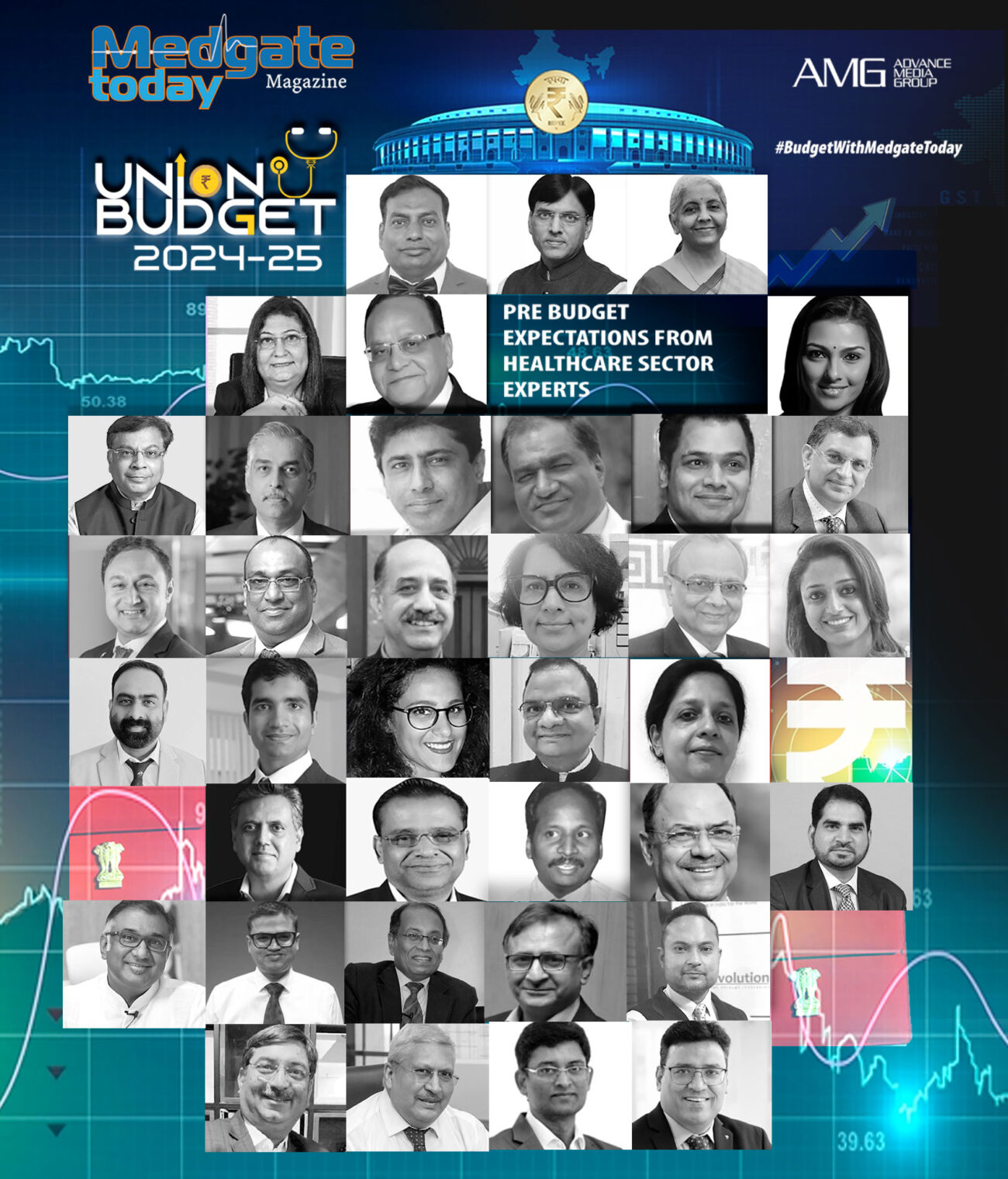
PRE Budget Expectations FROM healthcare sector experts – 2024-25 Afzal Kamal, Editor-in-chief, Medgate Today To achieve twin objectives of Equitable and Secured Healthcare, and Holistic Vasudhaiv Swastha Kutambakam I hereby propose following suggestions A co-ordination cell/nodal agency
PRE Budget Expectations FROM healthcare sector experts – 2024-25

Afzal Kamal, Editor-in-chief, Medgate Today
As we approach the upcoming budget, the Healthcare sector is undergoing rapid transformation.
we urge policymakers to prioritize investments in healthcare infrastructure and digital health solutions. A robust healthcare system is crucial for the well-being of our nation, and increased funding will enhance accessibility and quality of care.
…………………………………………………………………………………………………………………………………………………………………………………………………………………………………………………………………………………………

Dr. Minnie Bodhanwala, CEO, Wadia Hospitals
As per the Economic Survey 2022-23, the Central and State Governments’ budgeted expenditure on healthcare touched 2.1 % of GDP in FY23 and 2.2% in FY22, against 1.6% in FY21, however the total healthcare spending of India is still one of the lowest in the world and lagging behind the GDP growth spending as compared to the budgets of other nations like USA, Canada, New Zealand, Australia etc. who spend more then 17%. The basic expectation from this budget will be to see an increased spending on the healthcare sector, in order to make available the basic healthcare infrastructure and affordable healthcare for all. There is a huge unmet need for healthcare infrastructure and professionals in the nation that needs to be addressed by providing right quality healthcare with trained professionals to improve the Healthcare indicators. The trends in diseases are changing as well, more and more deaths in India are happening because of non-communicable or lifestyle associated diseases, provisions and policies to spread awareness on the importance of prevention and how to mitigate these diseases should be considered.
Where most of the renowned Doctors in various other countries are of Indian Origin, India is not considered to be a leading hub for Healthcare, efforts need to be focused in making India a Hub of excellence for Healthcare services by increasing spending on technology and Infrastructure. Increase in tax incentives for research in Healthcare could help achieve the same and further support the made in India Initiative of Government of India as well.
Initiatives to encourage improvement of healthcare availability in under-served areas would also help bridge the rural-urban disparity. The government can look into providing more incentives to individuals and organizations that strive hard to improve rural health.
Tax incentives should be given for setting up new hospitals. Incentives for domestic manufacturing of medical devices and consumables should also be considered in the budget this year. The progress on improving the condition of women and children is really slow, the under 5 mortality and maternal mortality rates are still on higher side, increased spending’s on nutrition, drinking water coverage, sanitation, female secondary school enrolment should be undertaken.
Incentives for emerging sectors like Health insurance and Medical tourism can benefit the industry.
As it is rightly said investing in healthcare is investing in the growth of the nation, given the current situation and the lack of healthcare facility for the masses, the Government clearly needs to invest more for Public Health infrastructure and research. There is a need to revisit our public health policy and come up with better solutions to ensure that there is efficient utilization of financial resources as well. There is still a huge gap between the private and public sector healthcare facilities, which needs to be addressed. Poverty alleviation schemes in the metros and cities are also much needed as the cluster of slums becomes a huge hurdle in public health of the nation. Our human resources both medical and paramedical for public health are inadequate as well, there is a strong need to invest more in the training centers and better incentives for the public healthcare workforce.
The Government definitely needs to increase the investment in surveillance capacity for communicable diseases and other natural disasters as well, to lower the burden on healthcare services during such situations. We need more focus and vigor in the healthcare sector collectively across all the sectors with special attention for the women and children, the elderly and disabled.
On the technology front, the need of the hour is to manufacture all healthcare needs, especially biomedical equipment in India. The Made in India campaign needs to be further strengthened for healthcare. This will help in making healthcare affordable for all, and increase job opportunities in India.
High taxes that are paid on consumables, equipment, etc., could be reduced to make healthcare more affordable for the masses. There needs to be rationalization of GST and additional subsidies to healthcare providers for utilities like power, etc., will also help to make care more affordable for the masses.
Increasing the expenditure on healthcare, and its utilization by implementing schemes efficiently, will help in increasing the health of population at large and reviving and strengthening our economy even further. On policy interventions in the healthcare sector the state policies need to align with the healthcare objectives at large at the national level.
………………………………………………………………………………………………………………………………………………………………………………………………………………………………………………………………………………………….
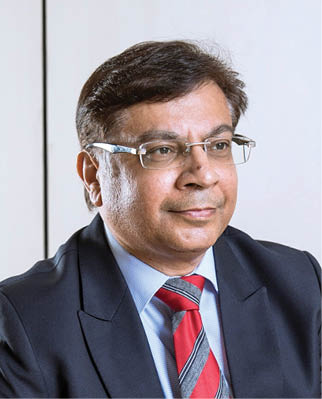 Rajiv Nath, Managing Director, HMD
Rajiv Nath, Managing Director, HMD
Forum Coordinator, AIMED
Budget 2024: AiMeD urges the Centre to address the soaring Medical
Device import bill, which currently stands at over Rs 63,200 crore
New Delhi: As the medical devices imports continued to grow at an “alarming” level, the Association of Indian Medical Device Industry (AiMeD), in its pre-Budget recommendations, has urged the Centre to address the soaring import bill, which currently stands at over Rs 63,200 crore. In a letter to the Hon’ble Finance Minister, Smt. Nirmala Sitharaman, AiMeD on behalf of the Indian Medical Device industry requested to consider the Medical Devices Industry Proposal for Union Budget 2024-25 to help curb the over 80% import dependence, as sadly last year the Medical Devices Industry Proposal for Union Budget 2023-24 was not considered even though the Dept. of Pharma has been supporting it.
“It’s disheartening to note that imports are still on an increasing uptrend of over 21% over the last 12 months at Rs. 61,000 Crore compared to Rs. 50,000 Crore in the same period of preceding 12 months. Policy makers need to review the steep 33% increase in imports from the USA (the dominant exporting country to India) of Rs. 10858 Crore over Rs. 8186 Crore in 2021-22, Germany up at Rs. 6188 Crore from Rs. 4855 Crore in 2022, by a steep 27%.Imports from the Netherlands also increased by 20 percent to Rs 3552 crore in 2022-23 from Rs 2956 crore in 2021-22, whereas imports from China increased by 11 percent at Rs. 10,384 crore in 2022-23 from Rs. 9374 crore in 2021-22 and Singapore by 15 percent from Rs. 4800 crore to Rs. 5520 crore”
“Unless policies of consumer electronics and mobile phone manufacturing by levy of nominal 15 % duty are replicated to Medical Devices, we will continue to be more than 80% import dependent at zero to 7.5% duty rates. It’s not that we are not competent, in many products India is globally competitive but sadly not in our own country. Also consumers are protected by MRP capping and price controls post monitoring and not by making them dependent on imports at zero duties with MRP at over 10-20 times of Imports Landed price.” Stated Mr. Rajiv Nath, Forum Coordinator, Association of Indian Medical Device Industry (AiMeD)
Mr. Nath also highlighted the need to reschedule the duty revision of Key Components of X-Ray Equipment that had been planned under a PMP (Phased Manufacturing Plan) as manufacturing of these Components have not yet started and the duty increase is now creating an Inverted Duty Structure making India X-Ray equipment manufacturer non competitive.
A domestic Medical Devices industry insider who did not wish to be named rued that Bureaucrats state that you all need to be competitive, why do you need duty protection? “We wonder why that logic is not applied to our automobile industry with duty protection of over 100%? And auto components at 40%!? If they are strong and supposedly globally competitive then reduce their duty to zero or 7.5% and see how well they grow therafter?” he questioned. “We are not seeking 40 or 100% but a nominal 15% to neutralise the 15% disability factor of manufacturing in India”.
AiMeD has the following Budget recommendations to end the 80-85% import dependence forced upon India and an ever-increasing import bill of over Rs. 63,200 Crore:
1. Increase in Custom Duty to a nominal 10%-15% Duty and a predictable tariff policy
2. Correction of Inverted Duty by levying Health Cess of 5% custom duty on balance Medical Devices (this was not earlier applied to all HS Codes). Cess is used for Ayushman Bharat.
3. Trade Margin Capping by monitoring MRP of Imports (if over 10 – 20 times of CIF)
4. Income Tax benefits for project investments in Medical Devices Manufacturing.
As per GTRI report of August 2023, the Indian medical devices industry can expand from $12 billion to $50 billion by 2030, reducing import reliance to 35% and boosting exports to $18 billion. Supporting policies are needed so that Indian Medical Devices Industry can make quality healthcare accessible and affordable for the common masses, aim to place India among the top five medical devices manufacturing hubs worldwide and help end the 80-85 per cent import dependence forced upon us and an ever-increasing import bill of over 63,200 Crore.AiMeD’s recommendation aligns with the Indian government’s ‘Atmanirbhar Bharat’ (Self-reliant India) initiative and underscores the importance of fostering a robust domestic medical device industry as stated in National Medical Device Policy of 2023.
………………………………………………………………………………………………………………………………………………………………………………………………………………………………………………………………………………………….
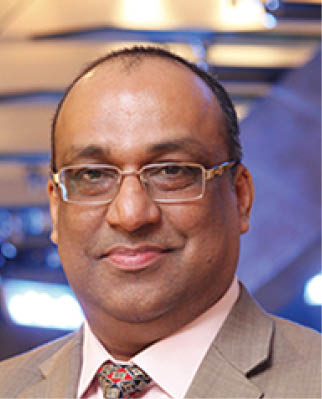
Pavan Choudary, Chairman, MTaI
” In recent years, the Medical Device industry has benefitted hugely due to noteworthy initiatives by the government, such as the National Medical Device Policy (NMDP), the Promotion of Research & Innovation in the Pharma-MedTech sector (PRIP) scheme, the establishment of medical device parks and elevation of branding and promotional strategies for the growth of the sector. This enterprising approach of the government is appreciation-worthy. That said we must also be cognizant of the nuances of the medical device sector which comprises mechanical and engineering complexities. Unlike other sectors, most medical devices have a high value but are produced in low volumes. It may therefore not be economically viable to manufacture all devices in a single geographical area. Even countries with highly developed medical manufacturing hubs like USA, Japan, Germany, etc. also rely on imports to cater to the healthcare needs of their country.”
“India’s current tariff duty structure on medical device imports is very high. This high customs duty regime adversely impacts the costs of medical devices which contradicts the government’s efforts to provide low-cost healthcare available to the masses through schemes like the Ayushman Bharat program (PMJAY). Therefore, we request the government that for products where the ability to import substitutes is still some time away, the customs duty rate should be reduced. “,
………………………………………………………………………………………………………………………………………………………………………………………………………………………………………………………………………………………….
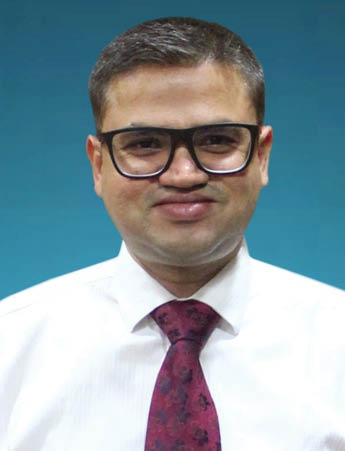 Jatin Mahajan , Secretary, Association of Diagnostic Manufacturers of (ADMI) India (ADMI)
Jatin Mahajan , Secretary, Association of Diagnostic Manufacturers of (ADMI) India (ADMI)
Managing Director, J Mitra & Company
Even as the Indian medical devices and biotechnology companies are ensuring that India emerges strongly on the global MedTech map, there are various policies and support decisions that we are looking forward to from the Government to ensure this growth.
In September 2023, Dr Mansukh Mandaviya launched:
National Policy on Research and Development and Innovation in the Pharma-MedTech Sector in India and
Scheme for promotion of Research and Innovation in the Pharma MedTech Sector (PRIP)
Both have the potential to be path-breaking initiatives, and we would like to see progress and concrete government action & budgeting to make this a reality.
The Indian Government constituted the Export Promotion Council for Medical Devices in 2023. This body must be strengthened to address the MedTech industry’s export issues adequately. This body has the potential to provide the much-needed fillip for the industry’s international growth and must be empowered and fast-paced.
The Commerce Ministry has set up a task force to address the exporters’ woes of all export ers. Hopefully, they will also examine the MedTech exporters’ woes and address their trade and technical barriers. A clear-cut path needs to be chalked out.
The Government’s decision to allow refurbished medical devices contravenes the National Medical Device Policy 2023, which seeks to make our country not only Atma Nirbhar (self-sufficient) in medical devices but also a global leader. This decision must be relooked and scrapped, except in most critical cases where Indian solutions may not be available for the next few years.
Quality and standardisation have always been a critical issue. There is a need to bring in rationalisation and ensure that Indian standards like ICMED enjoy the same respect, credibility, and acceptance as international standards like ISO, FDA, CE, MDR and AIMD. Without an at-par status, Indian exporters will continue to grapple with the bottleneck of seeking individual certifications for each product in every country they want to export to.
The Government’s procurement policy seems to favour imported devices, and the current trend highlights that there are more imports than procurements from domestic players. Even though the government has created a policy for purchase preference for Made in India products, unfortunately, this policy has not worked. In most government purchases, there is no preference for ‘Made in India’ as the state governments are not implementing this policy effectively.
Skilled human resources are critical areas that need compelling government attention. This should be taken up on priority under the skill development initiative. The Government must work with the industry to identify the specific need-gap for timely addressal of the issue.
With the massive influence that AI – ML – IoT, and telemedicine have on the medical devices segment, there is an urgent need to put safeguards and guidelines in place. AI adoption and implementation and data privacy issues require a comprehensive AI and cyber security policy to be drafted and implemented.
Inverted duty structure remains a long-standing woe of the medical devices segment, and the Government’s stoic inaction on this front is surprising and dismaying.
We have regularly drawn the government’s focus to numerous other issues, concerns, and attention areas – insufficient raw material & supplies, access to clinical trials, and the ineffectiveness of the PLI scheme since it does not cater to the relatively less significant players. For India to shine on the global MedTech map, the Government must address these concern areas on a war footing.
India is the global Centre for frugal medical device engineering. However, most hi-tech innovative products and technology originate from a well-developed ecosystem, and the US + Europe + Japan accounts for about 85 per cent of the roughly $220 billion revenues. There is an urgent need for G2G and P2G interactions and interfaces to transfer relevant technologies to India (as is happening in defence productions).
The MedTech industry in India is currently at a turning point with high-growth opportunities. Key factors such as market size, cost-effective manufacturing, a skilled workforce, and a thriving startup ecosystem will lay the foundation for expanding the industry.
The Government should promote an innovation culture in India to promote indigenous industry and reduce our dependence on imports. By 2025, the Indian MedTech market may reach USD 50 billion with a growth rate (CAGR) of 22%.
………………………………………………………………………………………………………………………………………………………………………………………………………………………………………………………………………………………….

Sunil Khurana, CEO & MD BPL Medical, Technologies Pvt. Ltd.
As we look forward to the upcoming budget season, I aim at steering not just BPL MedTech, but the entire medical technology sector towards growth, resilience, and self-reliance. The below views encapsulate the aspirations of not only BPL Medical Technologies, but the MedTech industry in India.
• A renewed commitment to the “Make-in-India” initiative. The GOI must prioritize policies that empower domestic manufacturing, positioning India as a global leader in producing high-quality medical devices.
• To ensure the success of made-in-India products, implementation of better policies, streamlining regulations and incentivizing the adoption of locally manufactured medical devices within the Indian market needs to be encouraged.
• An increase in custom duties to establish higher entry barrier of cheaper and low-quality products that are presently circulating in the market, in hopes to safeguard our domestic market and promote the utilization of high-quality, locally produced medical devices.
• Creating an easier route for exports and simplifying procedures will facilitate the global reach of Indian medical devices, contributing to a more robust industry.
• The Production-Linked Incentive (PLI) scheme proposed by the GOI needs redefinition, to ensure that MSMEs and Medium-scale Indian companies can readily qualify for its benefits.
• Recognizing the challenges posed by understaffing in regulatory bodies like BIS, CDSCO etc., a significant increase in team size and resources is appreciated, to expedite approval processes, particularly benefiting smaller companies, with a firm commitment to ensuring a turnaround time of no more than 30 days.
• A more participative approach to incentivize R&D, suggesting the subsidization of intangible expenses of technology transfer. Coupled with a 50% subsidy, this initiative will accelerate the localization of medical devices.
• As stated previously, a yearly increase in government expenditure on healthcare as a percentage of GDP, with the goal of reaching 5% in the next few years will contribute to building a stronger and more resilient healthcare system.
These pre-budget expectations will not only enhance the competitiveness of Indian products but also contribute significantly to the growth and sustainability of the Indian MedTech sector. It is my hope that these proposals resonate with the government’s vision for a healthier, more self-reliant India.
………………………………………………………………………………………………………………………………………………………………………………………………………………………………………………………………………………………….

Dr Ashutosh Raghuvanshi, MD and CEO, Fortis Healthcare &
President, NATHEALTH
As India navigates the critical path of healthcare reform, NATHEALTH has presented a comprehensive set of budget recommendations to the government, targeting transformative changes. Our proposals emphasize the need to bridge regional healthcare disparities through inclusive and innovative strategies. We are advocating for an increase in healthcare spending to 2.5% of GDP and the rationalisation of the GST framework. Additionally, we aim to enhance the medical value travel segment by addressing the MAT credit issue and strengthening the healthcare value chain, which is essential for driving economic growth and creating new job opportunities. A key focus should be on building local capabilities to deliver healthcare services even in the most remote regions, alongside the localization of the healthcare value chain. Equally important is the capacity building and training of healthcare professionals, which is crucial to cater to our nation’s increasing healthcare needs. These measures are fundamental to developing a resilient and efficient healthcare system in India.
………………………………………………………………………………………………………………………………………………………………………………………………………………………………………………………………………………………….
Anish Bafna, CEO and MD, Healthium Medtech
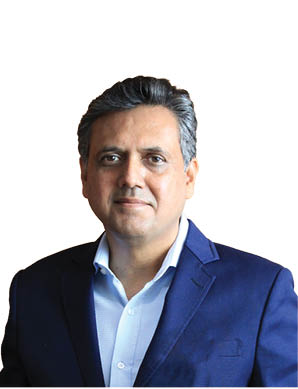
“As India continues to enhance its position and seize the opportunity to become a global hub for the medtech sector, the industry is poised to witness continued expansion, growth, investment opportunities and technological innovation during FY 2024-25. For the sector to achieve economies of scale, a collaborative action plan involving public-private partnerships between the government, medical device companies, hospitals, manufacturers and suppliers, healthcare providers and insurance players, continues to be the need of the hour. Conducive policies will back the industry, encourage the spur in local manufacturing and allow new medical devices to reach patients faster, benefiting patients and healthcare providers.
As we gear up for the Union Budget of FY 2024-25, the industry will look forward collectively to a phased out approach on custom duties, facilitation of single window clearances for local manufacturers, increase in export incentives under RoDTEP (Remission of Duties and Taxes on Export Products Scheme) along with broadening the scopes of schemes like PLI. A separate law provision and an inclusive regulatory framework, will enable faster access to innovation, keep up our relentless spirit of ‘AtmaNirbhar Bharat’ and eventually help accelerate better clinical outcomes. The opportunity and vision for India as a medtech hub remains within our collective grasp; how successfully we will seize it will define the industry outlook and status.”
………………………………………………………………………………………………………………………………………………………………………………………………………………………………………………………………………………………….

Dr Ravi Gaur, Founder UNIDRG Path labs & Chairman
medical advisory committee, Unipath Speciality Laboratory Ahmedabad
We eagerly anticipate two critical and long-overdue priorities in the upcoming Union Budget 2024-2025 – increasing healthcare spending to 2.5% of GDP and rationalizing the GST framework specifically for healthcare. It is imperative to provide at least minimal health insurance for all, foster long-term investments in infrastructure, and advance digital health services. While significant progress has been made recently, building skills and capacity for new-age healthcare services is crucial. Special emphasis should be placed on integrating smart technology and digital learning for healthcare providers.
In the face of growing stress and challenges, it is crucial to comprehend wellness beyond physical health. It’s time to invest in the Multidimensional Model of Wellness, including inner health, and create awareness programs to build a holistic healthcare approach. This is essential for improving the average good quality of life index, which has either remained static or declined due to the increasing pace of life.
………………………………………………………………………………………………………………………………………………………………………………………………………………………………………………………………………………………….
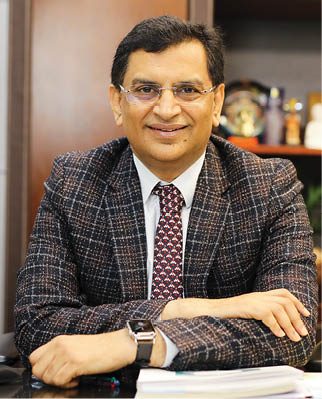
Himanshu Baid, Managing Director, Poly Medicure Ltd
As we stand on the cusp of a new fiscal year, we believe that the forthcoming budget holds immense promise for the healthcare industry, and we eagerly anticipate policies and provisions that will propel us to new heights. The government could consider enhancing budget allocation to 2.5% of the GDP, aiming to accelerate healthcare reforms & bolster infrastructure.
For MedTech sector, the emphasis should be directed towards enhancing R&D infrastructure and rationalizing taxes, paving the way for the ambitious goal of achieving a $50 billion by 2030. We hope to see increased allocations towards research initiatives, with a specific focus on advancements.
Access to capital is another key factor. We hope to witness financial incentives, support mechanisms & innovative models that encourage investment in research, development, and manufacturing capabilities. This includes provisions for tax incentives, subsidies, and funding avenues that can empower companies to expand their operations & invest in cutting-edge technologies.
The government should consider rationalization GST rates to 12% for all medical devices to improve significantly to sector’s competitiveness and to remove inverted duty structure.
In addition, the MedTech sector places a strong emphasis on skill development. Therefore, we look forward to budgetary allocations aimed at promoting education and training programs specific to the MedTech industry.
We expect the Union Budget to address the integration of digital health solutions into mainstream healthcare by providing incentives and support for the development and implementation of telemedicine, health information systems, and other digital platforms.
The MedTech sector eagerly awaits the Union Budget with optimism, hoping that it will serve as a catalyst for innovation, growth, and inclusivity.
………………………………………………………………………………………………………………………………………………………………………………………………………………………………………………………………………………………….
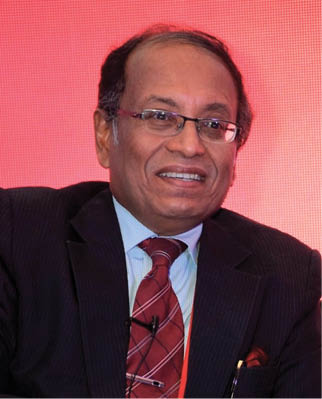
Anjan Bose, Founding Secretary General of NATHEALTH &
Former President of Philips Healthcare and Consumer Lifestyle
Indian Healthcare is at a momentous crossroad today in this post pandemic era…Our unique challenge is the need to address the serious issues related to both “Infectious” diseases and “Lifestyle” diseases in almost equal proportions…The mega trends for future include the increasing focus on “Preventive and Wellness” based care alongside the inevitable needs of “disease cure based” care..
In the backdrop of this wide portfolio of Healthcare needs in a vast country like ours with so many diversities, we need to optimally consolidate the existing health infrastructure and innovatively accelerate new care infrastructure creation…not only in Hospitals but equally importantly in Home Care and Ambulatory care…Any incentivisation announcement in the coming Budget to enable this to happen would add value to the progressive journey of Indian Healthcare…for example, more CSR spending in healthcare, direct and indirect tax rationalisation, long term infrastructure support lending at attractive interest rate…the indirect positive fallout of this would be enhanced job creation.
Some other important areas to focus on could be Medical Value Travel/Tourism, Digital Health across all segments, rationalisation of GST, granting of Infrastructure & Priority sector status for Healthcare to boost investments.
As the saying goes: “Health is Wealth”….For a Nation to be wealthy, it must be healthy at first and this 2024 Budget is an ideal opportunity to keep going in the path of progress in making India a benchmark country in good health.
………………………………………………………………………………………………………………………………………………………………………………………………………………………………………………………………………………………….
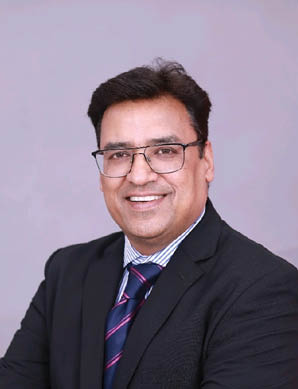
Dinesh Lodha, CEO – TI Medical
As we prepare for the upcoming union budget, I would like to highlight a few key expectations for MedTech industries. To begin, a favorable economic environment that supports R&D projects is crucial for innovation in the continually changing healthcare market. We anticipate financial provisions that will promote investments in cutting-edge technologies, ensuring our market leadership. Furthermore, simpler regulatory processes and supporting policies will hasten product introductions and market entry. An emphasis on skill development and worker training incentives would improve our team’s skills while also aligning with our commitment to excellence. We are confident that a budget that meets these aspirations would not only encourage the expansion of our MedTech firm, but will also contribute to the improvement of healthcare
………………………………………………………………………………………………………………………………………………………………………………………………………………………………………………………………………………………….
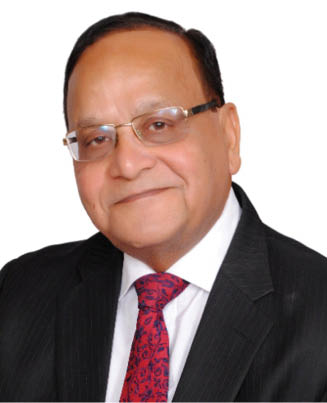
Sudarshan Jain, Secretary General, Indian Pharmaceutical Alliance
I would like to take this opportunity to share pre-budget recommendation quotes from Indian Pharmaceutical Alliance, Metropolis Healthcare, Fortis Healthcare and NATHEALTH
Budget 2024 should accelerate the pace of life-sciences innovation & R&D
India has played a pivotal role in shaping global health outcomes by providing affordable quality-assured medicines. Today, the Indian pharmaceutical industry is at the cusp of change. The Indian pharma sector aims to achieve USD 120–130 by 2030 and USD 400-450 by 2047. To achieve this vision, the Union Budget 2024-25 should accelerate the pace of innovation and R&D. The announcement of the Promotion of Research & Innovation Program (PRIP) Scheme in 2023 was a positive step to spur innovation. Given the high risk, long gestation period and low success rate in research, there is a need for continuous investments. Therefore, the budget 2024-25 should outline conducive policies that provide benefits in terms of both direct and indirect taxes and also facilitate ease of doing business for the pharmacos.
The year 2024 is likely to witness the initial results of the various initiatives to augment India as a reliable supplier of medicines. Policy stability and continuity will be fundamental to propel the sector’s growth. India is poised to move to “Discover and Make in India” from “Make in India”, making India the custodian of healthcare of the world.
………………………………………………………………………………………………………………………………………………………………………………………………………………………………………………………………………………………….

Ameera Shah, Promoter & Managing Director Metropolis Healthcare Ltd.
Amid the fast-changing healthcare landscape and with COVID-19 once again in the spotlight, the upcoming Union Budget for 2024-2025 holds significant importance in strengthening India’s healthcare ecosystem. The forthcoming budget should serve as a driving force, channelling investments towards critical areas such as innovation, research and development, technology, upgrading healthcare infrastructure, and bolstering patient safety measures. Given the escalating burden of Non-Communicable Diseases (NCDs), we emphasize the necessity for regular and inclusive screening and diagnostics programmes along with more skilling courses for health professionals to attract as well as upskill talent in the diagnostic space. Additionally, we strongly advocate for the government’s consideration to implement a 0% GST on diagnostic services and facilitate refunds for GST paid on inputs. Recognizing that 60% of India’s diagnostics are reliant on imports, it becomes paramount for the government to rationalize import tariffs on healthcare products. Low-cost financing schemes can enable private players to upgrade and add diagnostic infrastructure in tier 2 and 3 geographies. These initiatives will not only enhance accessibility and affordability but also lay the groundwork for a robust healthcare ecosystem that can effectively combat present and future healthcare challenges.
………………………………………………………………………………………………………………………………………………………………………………………………………………………………………………………………………………………….
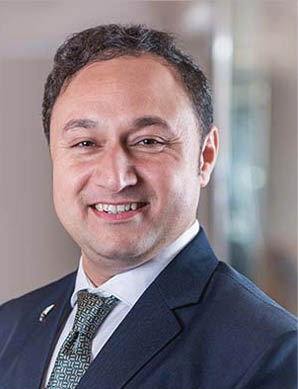 Dr Rajiv Chhibber, Vice President SMT & Joint Coordinator AIMED
Dr Rajiv Chhibber, Vice President SMT & Joint Coordinator AIMED
In the past few years, the healthcare sector has been a focus sector for the government, with a steady increase in allocations year-on-year in successive budgets.
The upcoming budget 2024, offers a crucial opportunity to take forwards the aspirations of the Hon’ble Prine Minister who coined the MedTech sector as a “sunshine” sector. There has been great focus on encouraging investments and promoting schemes like PRIP (Promotion of Research and Innovation in Pharma MedTech Sector) and MedTech Mitra by Department of Pharmaceuticals and ICMR-DBT
As we head to National Elections, the Union Budget 2024-25 needs to address long-term infrastructure financing and fiscal reforms in the health insurance sector since Ayushman Bharat is expected to expand from the Rs 5lacs coverage to Rs 10 lacs, hence India needs a health insurance model that prioritises preventive healthcare over procedures under PMJAY.
Further, the Budget 2024-25 needs support the medtech sector by reducing import duties and lowering GST on locally procured raw materials, particularly for critical medical devices such as Implants like stents, heart valves, Occluders etc. There needs to be a budgeting where common people can aspire to get critical healthcare treatments like TAVI under the national and state schemes and encourage private health insurance companies to embrace the same so that healthcare access for economically weaker sections can be made pocket friendly. This will this will clearly be seen as a win-win to achieve the goal of ‘affordability, availability and accessibility’.
Again, the Union Budget should focus on further boosting research and development infrastructure and tax rationalisation, gearing up for an aspirational $50 billion medtech economy. The heavy import duties on medical equipment affect operational costs. The medtech industry would be expecting a reduction of import duties, creating a win-win situation for both manufacturers and large hospitals, ultimately benefiting the patients.
Lastly, timely payments and transparent pricing are essential to provide quality care. We look forward to clear guidelines from the government, addressing outstanding dues and revising rates under government schemes to ensure the viability of healthcare which will help corporates to enhance their innovation budgets and improve quality outcomes.
Therefore, the Industry expectation from the Budget is for continuity of that framework and adequate focus as well as funding support for all components of the ecosystem to ensure that we progress on the goals of prevention and wellness.
………………………………………………………………………………………………………………………………………………………………………………………………………………………………………………………………………………………….

Viren Shetty,
Executive Vice Chairman of Narayana Health
“The Indian healthcare sector’s growth is commendable, and it has benefited from dedicated policy and regulatory support from the government. Recognizing the need for providing Universal Health Care, we expect the interim Union Budget 2024-25 to unveil a roadmap for addressing long-term infrastructure financing, increasing the number of medical and nursing colleges, and fiscal reforms in the health insurance sector. India needs a health insurance model that prioritizes preventive healthcare over procedures, and Narayana Health is well placed to achieve this goal with the support of the government.”
………………………………………………………………………………………………………………………………………………………………………………………………………………………………………………………………………………………….
 Shaina Ganapathy, Head of Community Outreach – Embassy Group
Shaina Ganapathy, Head of Community Outreach – Embassy Group
As the Indian economy regains momentum, the upcoming budget presents a golden opportunity to build a nation where every individual holds the promise of a secure future. At Embassy Group, we envision a vibrant India where robust health, empowering education, and future-proof skilling form the bedrock of sustainable growth.
Imagine a nation where quality healthcare is not a privilege but a right. We urge the government to prioritise primary healthcare infrastructure, ensuring every corner of our vast landmass receives quality care. Continued investment in preventive programmes, like vaccination drives and community-based health education, can build individual and societal resilience against future health challenges. Nurturing a dynamic medical research ecosystem through public-private partnerships will not only fuel innovation but also equip us to combat unforeseen health threats.
Education must be the cornerstone of our empowered nation. We advocate for increased funding for public schools, ensuring quality education becomes a reality for every child, regardless of their background. Skill development initiatives must evolve beyond traditional vocational training, embracing digital literacy and skillsets aligned with the ever-shifting needs of modern industries. Scholarship programmes targeted at underprivileged students can bridge the access gap and unleash their immense potential.
To thrive in a dynamic economy, the budget should incentivize on-the-job training programmes and industry-academia collaborations, fostering a skilled workforce prepared for the evolving job market. Expanding apprenticeship programmes and providing tax breaks for companies investing in skill development can create a win-win situation for both employers and employees. Focusing on entrepreneurship and small business development, particularly in rural areas, will not only generate new employment opportunities but also drive inclusive growth, ensuring no one is left behind.
By investing in these critical areas, the Union Budget 2024 can become the blueprint for an India where every healthcare centre, school, and skilling initiative acts as a brick in the foundation of a nation where every individual contributes to, and benefits from, a secure and prosperous future. Let us build an India where every child’s dream, every entrepreneur’s vision, and every citizen’s aspiration can flourish, brick by brick.
………………………………………………………………………………………………………………………………………………………………………………………………………………………………………………………………………………………….
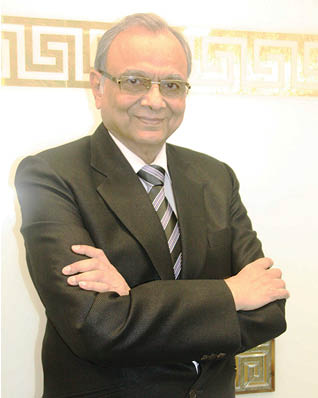
Rohit Mehta, Founder & Managing Director, ICPA Health Products Ltd
With nearly two-thirds of India’s population residing in rural areas, access to medical services remains a critical challenge. This coupled with the fact that per capital income of an urban person is nearly double to that of his rural counterpart, it simply highlights the fact the if we have to improve our country’s standing on medical services, the focus should be the rural areas where lot needs to be done.
The stark disparity in doctor-to-population ratios between rural and urban areas leaves the rural population significantly disadvantaged in healthcare access. Unfortunately because of this, the rural population fails to get the medical facilities greatly as compared to the urban. This we are talking about the basic medical health (largely catered by General Practitioners or MBBS doctors). However, specialists like heart surgeons and neurosurgeons are virtually absent in most rural areas, severely limiting access to advanced medical care.
In the upcoming Budget, we urge the Government to prioritize rural healthcare in its budgetary allocations, investing both directly in infrastructure and medical personnel; and through targeted incentives to attract doctors and hospitals to underserved areas.
………………………………………………………………………………………………………………………………………………………………………………………………………………………………………………………………………………………….

Sugandh Ahluwalia, Chief Strategy Officer, Indian Spinal Injuries Centre
“The hospital sector is in dire need of a dedicated regulator and it is widely admitted that the establishment of a Regulator, leveraging the expertise of organizations like the National Accreditation Board for Hospitals & Healthcare Providers (NABH), can significantly streamline compliance and enhance transparency.”
“A regulator with statutory powers and including a broader representation of government officials and sector experts would go a long way in creating a new healthcare ecosystem. A Hospital Sector Regulator would be in a better position to eliminate entry barriers, create a Single Window Mechanism for over 100 compliances, and enhance ease of doing business, quality, and uniformity in the sector,”
………………………………………………………………………………………………………………………………………………………………………………………………………………………………………………………………………………………….
Prashant Arer, India Head, Enbio Group AG.
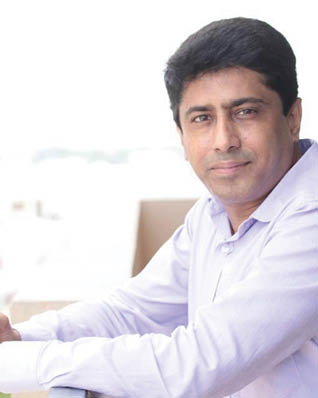 “Union Budget should focus on further boosting research and development infrastructure and tax rationalization, gearing up for an aspirational $50 billion MedTech economy. The heavy import duties on medical equipment affect operational costs. The Med Tech industry would be expecting a reduction of import duties, creating a win-win situation for both manufacturers and large hospitals, ultimately benefiting the patients,” expounded Mr. Prashant Arer, India Head, Enbio Group AG.
“Union Budget should focus on further boosting research and development infrastructure and tax rationalization, gearing up for an aspirational $50 billion MedTech economy. The heavy import duties on medical equipment affect operational costs. The Med Tech industry would be expecting a reduction of import duties, creating a win-win situation for both manufacturers and large hospitals, ultimately benefiting the patients,” expounded Mr. Prashant Arer, India Head, Enbio Group AG.
“The immediate focus should be on rationalizing import duties to ease the burden on hospitals and prevent passing on increased operational costs to patients. Currently, heavy import duties act as a penalty for patients, and we believe that rationalization is imperative for the sector’s growth and sustainability,”
………………………………………………………………………………………………………………………………………………………………………………………………………………………………………………………………………………………….
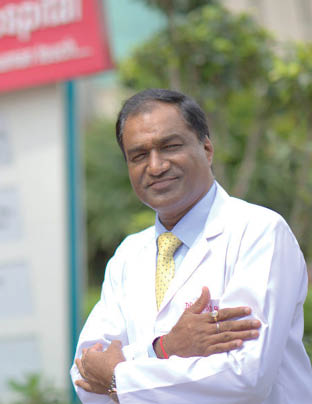
Dr Anand Bansal, Medical Director, Sri Balaji Action Medical Institute
“Rational pricing is the key. Timely payments and transparent pricing are essential for hospitals to provide quality care. We look forward to clear guidelines from the government, addressing outstanding dues and revising rates under government schemes to ensure the viability of healthcare institutions.”
“The government’s proactive approach in addressing the healthcare sector’s needs is commendable. As we approach the Union Budget, we expect innovative policies that not only strengthen the sector but also ensure affordable and quality healthcare for the 1.4 billion citizens,” concluded the Medical Director.
Healthcare experts acknowledge the pivotal role of India in global medical tourism and expect that there will be a policy push that can catalyze expansive growth, generating over 40 million jobs and substantial foreign exchange earnings.
………………………………………………………………………………………………………………………………………………………………………………………………………………………………………………………………………………………….
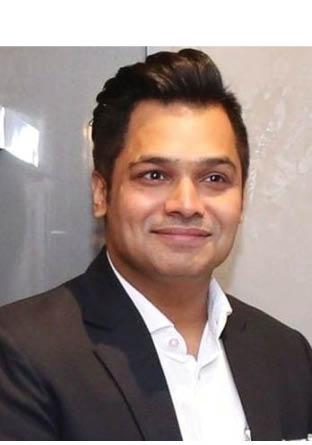
Mr. Baldev Raj, Founder and Chief of Prius Healthcare
“The government needs to provide a robust policy backing is imperative to cultivate and streamline medical-value travel (MVT) to India, paving the way for its evolution into a well-organized sector. The government needs more initiatives like ‘Ayush Visa’ (Special Visa Scheme for foreigners) and ‘Heal in India’ to make Indian healthcare and wellness a global phenomenon. India attracts medical tourists from different parts of the world. The government should create bilateral travel bubbles with countries contributing significantly to our MVT.”
“We will also be expecting some incentives in terms of land allocations, pricing, and tax rebates for greenfield hospital projects, similar incentives for PPP, and provisions for long-term credit facilities for the sector. Enacting stimulus packages, providing tax incentives, and facilitating ‘Priority Sector lending’ to healthcare, especially for enhancing capacity in Tier II and III cities, are essential. Incentives, accompanied by a promotional policy, can entice investments from medium and small hospitals into
tier-II and tier-III cities,”
………………………………………………………………………………………………………………………………………………………………………………………………………………………………………………………………………………………….

Dr.Kalpana Nagpal
Senior Consultant ENT / Otorhinolaryngologist, Head & Neck,
Chief Robotic Surgeon at Apollo Hospital,
New Delhi, India.Unipath Speciality Laboratory Ahmedabad
Budget allocated for health care sector has been very very less despite being the first thing that is important for mankind.A lot of health care reforms are required currently.We need to focus on preventive health like adult vaccines and also innovative technologies that has transformed health care.We also need cadaver labs and simulation labs for training juniors who would be future doctors and surgeons.We need to upgrade our infrastructure even in small towns and villages.We need atleast 4 times the budget that was allotted to healthcare previously.
………………………………………………………………………………………………………………………………………………………………………………………………………………………………………………………………………………………….
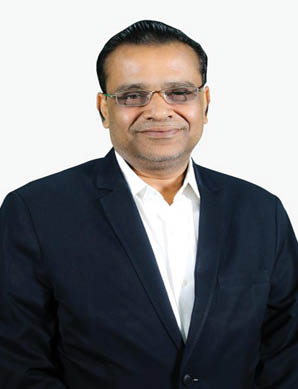
Saurabh Garg, Chairman, POCT Group
As the Chairman of POCT Group, that specialises in rendering In-House Laboratory Diagnostic Services and actively engaged in manufacturing under the Make-in-India initiative, innovation, research, contributing to lab accreditations, quality and skill development and aiming at addressing healthcare challenges comprehensively at all levels, I eagerly look forward to the upcoming Union Health Budget with increased and more robust allocation than the previous year, reflecting a holistic approach to health encompassing physical, mental, and social well-being. I anticipate a budget that catalyses growth, innovation, and enhanced accessibility in healthcare. Further expectations include increased funding for research and development, prioritizing preventive measures, augmented focus on investments in cutting-edge facilities and professional training. The upcoming budget should promote public-private partnerships and endorse digital health initiatives for improved service delivery. It should also include provisions for medication subsidies and social security schemes, crucial for enhancing affordability and reducing out-of-pocket expenses. Additionally, budget should encompass Universal Health Coverage, Emergency Preparedness, and International Health Collaborations, fostering knowledge exchange, resource-sharing, and capacity building.
………………………………………………………………………………………………………………………………………………………………………………………………………………………………………………………………………………………….
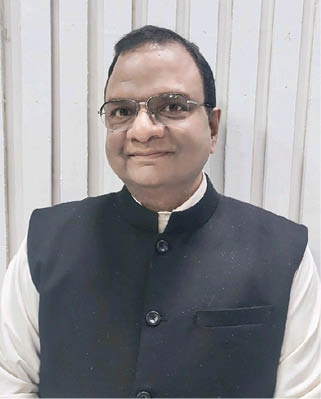
Dr.K.Madan Gopal, Advisor, Public Health Administration, NHRSC
I expect the government to double the insurance coverage limit under Ayushman Bharat Pradhan Mantri Jan Arogya Yojana (AB-PMJAY) from D5 lakh to D10 lakh, and expand coverage to include all senior citizens in the upcoming interim budget. My expectation is that this will expand health schemes and enhance insurance coverage, particularly benefiting women, tribals, youths, and the poor and vulnerable. I anticipate a significant increase in the health budget to D1.3 lakh crore for FY 25, about 25% rise from the previous year, to support these expansions.
Additionally, I expect plans to include raising funds for specific programmes like the National Sickle Cell Anaemia Elimination Mission and establishing new AIIMS centers, strengthening, capacitating and upgrading District level health institutions, underscoring a comprehensive approach to improving healthcare infrastructure and services in India.
………………………………………………………………………………………………………………………………………………………………………………………………………………………………………………………………………………………….

DR. JAYA KUMAR AGARWAL, Sr. Consultant – Gynaecology, RG-STONE Hospital
Additional measures needed to create new healthcare economy in the country. Acknowledging the critical role of reforms in fortifying health systems, the government is expected to make pivotal announcement in their upcoming budget 2024.
We seeks a booster dose through some specific structural and fiscal reforms including a push to medical insurance. The sector would be expecting the widening of the Ayushman Bharat card to everyone especially in remote areas on the one hand and a reduction of tax on health insurance premium on the other. As we need a health insurance model that prioritises preventive healthcare over procedure for mother and child care to create a new healthcare economy in the country.
Recommends increasing budget allocation for healthcare to augment the social insurance schemes, boosting healthcare reforms and infrastructure and fast-tracking digital health services across India.
Separate budget should be allocated for new medical and nursing colleges, training and developments programs for Doctors and allied healthcare workers so that quality healthcare facilities can be reached to all.
As a healthcare professional seeking budget for Obstetric Care during Delivery to be promoted through network of health facilities including Sub-centre, primary health centres, hospitals etc, to reduce maternal & neonatal morbidity and mortality.
………………………………………………………………………………………………………………………………………………………………………………………………………………………………………………………………………………………….
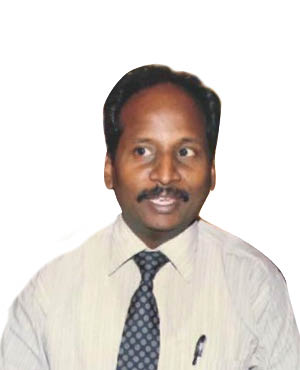
Kannan Jayaraman
CEO
TECHNOMED INSTRUMENTS & SERVICES
We want CDSCO Rules should be more simplified and the registration fee reduced and it should be in Indian rupees .
Also In case if supplier ( manufacturer ) closed down or stopped supplying due to any dispute or issue the fee should be adjusted to next registration if it is within two years of registration .
………………………………………………………………………………………………………………………………………………………………………………………………………………………………………………………………………………………….
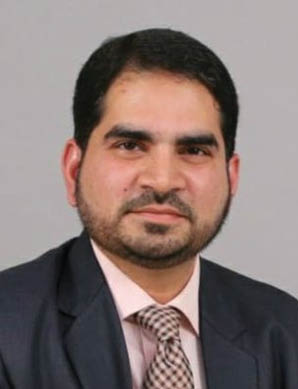
Dr. Wasim Ghori – UK Alumni
Consultant Diabetologist
Fellow – AHPI Leadership Forum, India
As we stand on the cusp of Union Budget 2024, the clarion call for prioritising rural healthcare echoes with urgency. The healthcare disparities between urban and rural India demand immediate attention, particularly with a substantial rural population facing significant challenges in accessing medical services.
The stark contrast in per capita income between urban and rural inhabitants emphasizes the critical need to redirect our focus toward rural healthcare. With a noticeable gap in doctor-to-population ratios, rural communities grapple with limited access to even basic medical services, let alone specialized care. Direct investments in infrastructure and medical personnel, coupled with targeted incentives to attract healthcare professionals to underserved areas, are paramount.
Furthermore, India’s healthcare system grapples with an escalating threat posed by the mounting burden of Non-Communicable Diseases (NCDs). Statistics paint a concerning picture, reflecting a substantial increase in conditions like cardiovascular diseases, diabetes, respiratory disorders and cancers.
According to recent data, NCDs contribute to over 60% of the total mortality rate in India, marking a significant shift in the disease landscape. The prevalence is particularly pronounced in urban areas, with lifestyle factors such as sedentary behavior, unhealthy diets and tobacco use exacerbating the problem.
In this plea to the government, I emphasize the necessity to allocate increased funding in public health programs, screening initiatives and Non-Communicable Disease (NCDs) prevention aligned with the National Health Mission’s objectives. A comprehensive approach that accentuates preventive healthcare, awareness, education and NCD screening at the primary care level is pivotal.
By fortifying primary healthcare in both urban and rural landscapes, we not only bridge the healthcare divide but also lay the foundation for a healthier and more equitable future.
………………………………………………………………………………………………………………………………………………………………………………………………………………………………………………………………………………………….
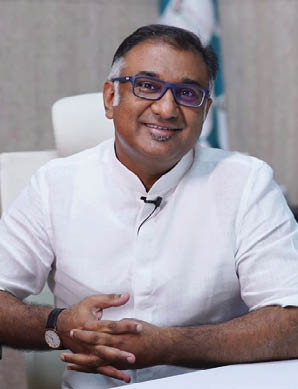
Dr. Shafiq A M
Co-Founder and CEO, Trilife Hospital
Currently the Healthcare sector in India is in a phase where non-communicable diseases are on the rise with a huge lacuna of human resources. In the upcoming Union Budget we are hopeful that the government will address the issue of accessibility of quality healthcare across the various strata of society, while encouraging and supporting innovation and R&D in the sector. An increase in healthcare spend as suggested by NITI Aayog, rationalization of GST framework and tax incentives for private sector participation in healthcare infrastructure development would help bridge the gap. An increase in allocation of medical and nursing colleges across the country would alleviate the issue of human resources for the sector.
………………………………………………………………………………………………………………………………………………………………………………………………………………………………………………………………………………………….

Diagnostics using Clinical genomics: Precision healthcare solutions
Emphasising the use of Next-Generation Sequencing (NGS) and DNA sequencing technology for disease control, especially focusing on Non-Communicable Diseases (NCDs) and emerging threats like COVID-19, while incorporating family welfare through health card support in a Public- Private Partnership (PPP) model, involves several key points:
About 10% of health care research budget is good start with, based on the revised frame work the budget can be revised. The frame work will also evaluate the reduction of GBD which is going to be path changing to health care industry in India.
NGS and DNA Sequencing Infrastructure:
• Allocate funds for establishing advanced NGS and DNA sequencing laboratories across the country.
• Ensure these facilities are equipped with cutting-edge technologies for rapid and accurate disease diagnostics.
• THE OBJECTIVE IS TO MAKE INDIA SELF SUFFICIENT IN GENOMICS TECHNOLOGY.
Disease Surveillance and Control:
• Develop a robust disease surveillance system utilising NGS for real-time monitoring of NCDs and emerging infectious diseases like
COVID-19.
• Implement proactive measures based on genomic insights to control the spread of diseases.
• INDIA CAN SURPASS THE GAPS AND SAND ALONE TO SERVE THE DEVELOPING NATIONS.
PPP Framework :
• Formulate PPP agreements to encourage private sector participation in establishing and maintaining NGS and sequencing facilities.
• Define clear roles, responsibilities, and revenue-sharing models for effective collaboration.
Health Card Support for Family Welfare:
• Introduce a health card system to track and manage family health records.
• Link health cards to NGS data for personalised health recommendations and preventive
measures.
Establish database for Indian population :
• Allocate specific grants for research projects and initiatives focused on establishing Indian population genome/disease
variants/gutbiome.
• Provide centralised access to industry users.
Genomics clinical and Data in NCDs :
•Genomics play and important role in diagnosis and specially NCDs, leveraging the technology and data along with clinical studies help in improving public health at a large level. Government should take initiatives in promoting such an advance treatment methodology.
………………………………………………………………………………………………………………………………………………………………………………………………………………………………………………………………………………………….
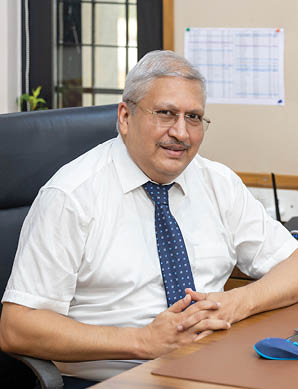 Dr. Vivek Desai, Founder & Managing Director,
Dr. Vivek Desai, Founder & Managing Director,
HOSMAC
As we approach Union Budget 2024, it is a critical juncture to address challenges in healthcare, specifically focusing on improving infrastructure and making healthcare more accessible. The following are key issues and proposed solutions that demand attention in the upcoming budget.
Improving Healthcare Infrastructure and Accessibility: A Focus on GST Rationalization
Building hospitals is a capital-intensive activity, often affecting patients directly. To alleviate this financial strain, a prudent step would be to trim the capex by streamlining the GST component in both construction and the procurement of medical technologies, thereby easing the financial burden. Additionally, considering the limited input credit avenues for hospitals, a similar GST rationalization for pharmaceuticals and consumables could contribute to cost reduction for both the industry and patients.
Tax Incentives for Healthcare Infrastructure
The government should consider giving a ten-year tax relief for NABH-accredited hospitals in smaller towns. Currently under section 80IB, operating and maintenance of hospitals with 100 beds or more, are given 100% deduction from tax on profits for initial 5 years. This should be increased to 8-10 years as hospitals usually incur losses for the initial 3 years due to high operational costs. This strategic move aims to attract investments and boost infrastructure creation in in Tier- II & III towns.
Public-Private Partnerships (PPPs)
PPP could be an important cornerstone for utilising existing public infrastructure especially in hinterland India. Facilitating a separate SPV, also known as special-purpose vehicle, should be created to formulate PPP on a win-win basis to attract the private sector.
Making Healthcare Accessible to the Middle Class
India’s thriving middle class usually faces the brunt of high medical costs as the lower strata is covered by state/central sponsored health insurance schemes and the richer class is able to afford private health insurance. In order to cater to the healthcare needs of the middle class, comprising of 31% of our population, the government should bring inclusion in schemes like Ayushman Bharat. Besides, co-payment strategies could be used as a tool to further motivate the middle class to get adequately insured.
Reducing Reliance on Medical Technology Imports
To curtail our reliance on medical technology imports (currently at 80%), a substantial increase in investment under the Production-Linked Incentive (PLI) scheme for manufacturing medical devices aligning with the surging demand, is necessary.
Promoting Green Hospitals
Modern Hospitals incur an energy expense in the range of 3-4% of their total income mainly towards air conditioning of the facility. Hence, incentives of electricity tariff subsidy should be given to hospitals in order to encourage them to move towards energy efficiency and secure green building certification.
Allocation of Healthcare Budgets
Last but not the least, the overall allocation to healthcare outlay should be increased to 2.5% as was assured in the past. The current spend of 1.8% is insufficient to meet the healthcare requirements of the nation.
A holistic budget addressing these concerns will undoubtedly fortify healthcare infrastructure, paving the way for a healthier and economically robust nation.
………………………………………………………………………………………………………………………………………………………………………………………………………………………………………………………………………………………….

Mr. Bhagwat Dhingra, MD & Founder, Medisage
As India prepares for the Interim Budget 2024-25, the healthcare industry has presented a distinct wish list, urging the government to prioritize three crucial areas: Research and development, infrastructure upgrades, and addressing non-communicable diseases (NCDs). The industry’s plea is backed by data indicating that India’s healthcare spending stands at a modest 1.8% of GDP.
Government data reveals that despite having over 1.3 million doctors and 3 million nurses, India’s healthcare system grapples with an uneven distribution of human resources. Particularly, rural areas face significant underservice, with a doctor-patient ratio of 1:847, well beyond the WHO’s recommended 1:1000, according to the union health ministry. This scarcity is exacerbated by skill gaps, high vacancy rates, and unappealing working conditions in rural settings.
Our budgetary focus prioritizes access to quality medicine for every individual, extending its reach to the rural corners of India. Through strategic enhancements in manufacturing policies, distribution channels, and mandates for doctors’ prescriptions, we aim to ensure that essential healthcare is within easy reach of the common man.
Additionally, we are committed to revolutionizing healthcare through digitization. Policies on the digital transformation of healthcare and healthcare providers will encompass areas such as diagnosis, treatment, and patient compliance. This forward-thinking approach not only enhances efficiency but also brings healthcare services into the modern era, ensuring a healthier and more connected India for all.
………………………………………………………………………………………………………………………………………………………………………………………………………………………………………………………………………………………….
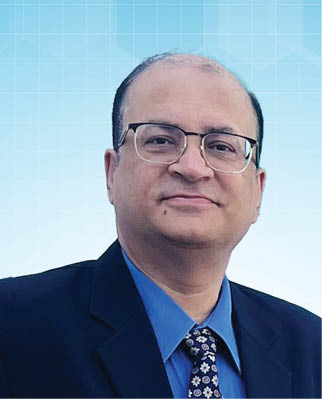
Raj Sehgal, Co-Founder Gratitude Healthcare Pvt Ltd
Associate Director TRLS Healthcare Consultancy
As we approach the upcoming budget, the healthcare industry is eagerly anticipating the allocations that will shape & improve the healthcare landscape in coming years.
Key expectations include ensuring adequate funding for essential healthcare services, addressing infrastructure gaps, emphasis on medical & paramedical education, promoting preventive measures, and enhancing accessibility, affordability.
We expect the budget to address key issues by introducing measures that make healthcare services more affordable, especially for low-income individuals. Strategies to reduce out-of-pocket expenditure are crucial to improving access to essential healthcare services.
Steps should be taken to increase coverage of Ayushman Bharat (PMJAY) beneficiaries to a larger population .
Continual Investments in healthcare infrastructure are essential for the long-term .
We expect comprehensive allocation in the construction of new hospitals, upgrading existing facilities (PHC, CHC & District Hospitals), and ensuring that healthcare infrastructure meets the needs of the population.
The healthcare sector faces challenges such as high capex for infrastructure & medical equipment , also the operational expenditure for hospitals are fairly large leading to higher treatment costs for patients. To overcome this, the expectations include the creation of an enabling mechanism for credit facilities, offering long-term credit with favourable terms to decrease the burden on hospitals.
Structural and tax reforms, including tax incentives and a tax holiday period for new healthcare projects, are also sought to transform the sector positively.
………………………………………………………………………………………………………………………………………………………………………………………………………………………………………………………………………………………….


